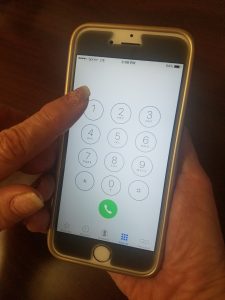 SOUTHWICK – When an individual dials 911, it is clear there is an urgent need for first responders to assist them. However, if the person dialing 911 can’t speak to a dispatcher for any reason, dispatchers want to remind the community that there is a procedure in place that can save their life.
SOUTHWICK – When an individual dials 911, it is clear there is an urgent need for first responders to assist them. However, if the person dialing 911 can’t speak to a dispatcher for any reason, dispatchers want to remind the community that there is a procedure in place that can save their life.
Developed by the Massachusetts State 911 Department, and mandatory for all dispatch departments throughout the commonwealth, the Silent Call Procedure is an important tool that can be utilized.
If someone calls and is unable to speak because they’re experiencing something like domestic violence, a home invasion, or choking, the dispatcher will stay on the line and ask again. If there is still no response from the caller, dispatch will test for a TTY (Text telephone device) call, which is when a caller can’t physically hear or speak. If it’s discovered that it’s not a TTY call, the dispatcher will go back to the open line with the caller and tell them to press 1 for police, 2 for fire, and 3 for ambulance.
As police are usually the first ones on the scene for a call, during a Silent Call Procedure, if the caller pressed 2 or 3 for fire or ambulance respectively, that will allow either of those first reponders to be the first ones on scene.
Robert Eak, who has been a full-time dispatcher for nine years at the Southwick Police Department, described the critical importance of allowing the person to press numbers rather than speaking in those type of situations.
“That way they can communicate without verbalizing or giving up information that they are on the phone with the police,” said Eak.
The Silent Call Procedure extends farther than just dialing numbers, as there is also a yes or no format. A dispatcher will begin to ask a series of questions to find out what kind of situation the individual may be in. For instance, common questions asked are, Is there an intruder in the house? Are there weapons involved? Do you have an injury?
“We can kind of interrogate them on what’s going on,” said Eak.
Josh Rutola, who is the Captain of the Granville Fire Department and also a dispatcher in Westfield, does see a drawback to the procedure as asking all yes or no questions can be time consuming, especially in a high volume situation that the caller may be experiencing.
Despite that, Rutola certainly does believe the procedure is a positive tool for the dispatchers and the callers.
“It definitely is a benefit even though it has a couple drawbacks,” said Rutola.
In order to find out more information on the Silent Call Procedure, the Mass.gov website, click on Public Education, and there will be a link at the bottom for Silent Call Procedure.


